Your basket is currently empty!
Category: Dyeing with plants

Drei Pilze zum Färben
Natürlich färben kann man nicht nur mit Pflanzen, sondern auch mit Pilzen! Hier bekommst du ein paar Tipps, wie du sie findest, und drei tolle Beispiele für Färbepilze. Wenn du noch mehr lernen möchtest, in meinen Farbnotizen zu Färbepilzen teile ich meine Ergebnisse, und die Tipps und Tricks zu unterschiedlichen Farben.Außerdem geht’s um Sojamilch zur…
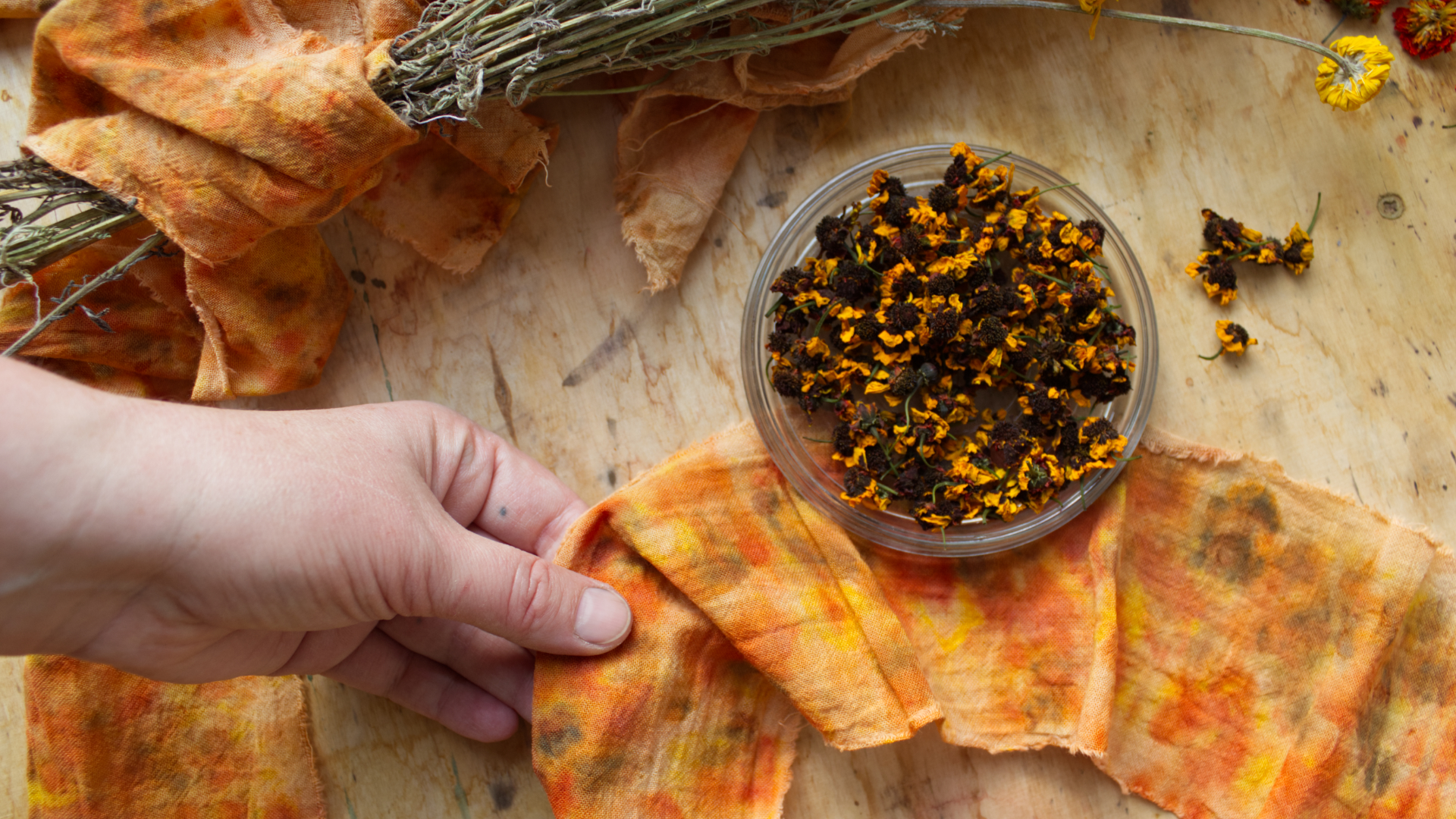
Kleiner Leitfaden für Bundle Dye
Beim Bundle Dye – also ‚im Bündel färben‘ – spielt der Zufall immer eine große Rolle. Pflanzenteile werden direkt auf dem Stoff platziert, der wird dann gefaltet oder eingerollt, und im Inneren dieses Päckchen passiert im Verborgenen das Färben! Wichtig ist für die meisten Pflanzen, der Stoff sollte bereits vorgebeizt sein. Gefärbt wird dann im…

Natural blue: Salt and fresh indigo leaves
Diese Methode zum Blau färben mit Indigo mag ich sehr gerne, weil sie so zugänglich ist. Ich kann direkt im Garten die frisch gepflückten Blätter verarbeiten, ohne viel Zubehör, ohne Stromanschluss. Am besten funktioniert es mit den frischen Blättern vom Färberknöterich (auch Japanischer Indigo), Polygonum tinctorum. Aber auch mit Waid, Isatis tinctoria, ergaben sich schöne…

Färben mit Birke
Die Birke hat viele Teile, mit denen man färben kann – Färbungen von Birkenblättern oder Birkenrinde hast du vielleicht schon gesehen (oder selbst probiert), und das ist noch nicht alles! Außerdem ist die Birke ein Baum, den man recht häufig bei uns sieht – wenn auch regional sehr unterschiedlich ausgeprägt, nicht zuletzt weil die Birke…
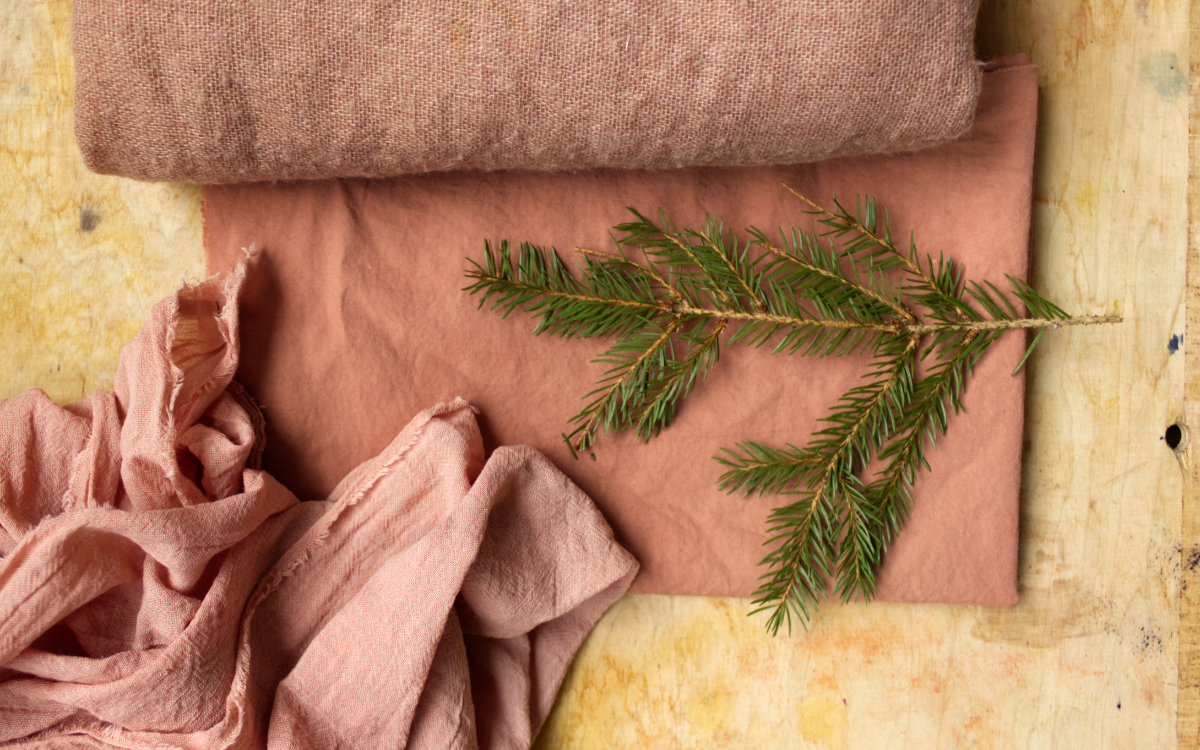
Dye plants in winter: Dyeing with spruce + how to identify conifers
Whether it's an old Advent wreath or prunings from your garden, you can dye with the needles of native conifers! These evergreen plants are some of the few dye plants to be found in winter (and throughout the rest of the year). Here are my tips for dyeing with spruce.
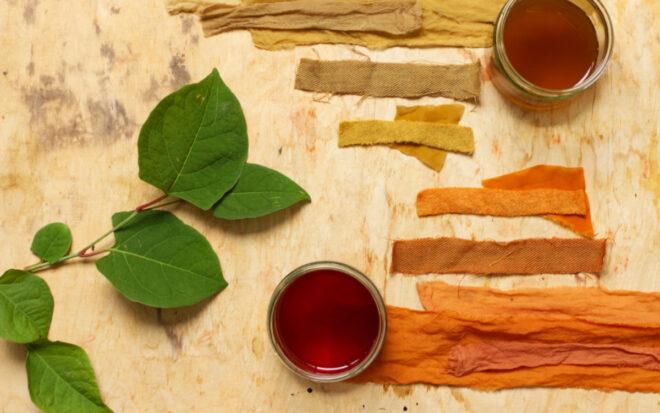
Dyeing with invasive knotweed
The invasive knotweed (Fallopia japonica) is a plant originally native to East Asia. Perhaps the name already makes you nervous? For many, this plant comes to mind thinking of 'invasive neophytes' in the plant world. But it was deliberately introduced to Europe in the 19th century as an ornamental and fast-growing crop plant. Get to know this plant, as a dye and its other uses!
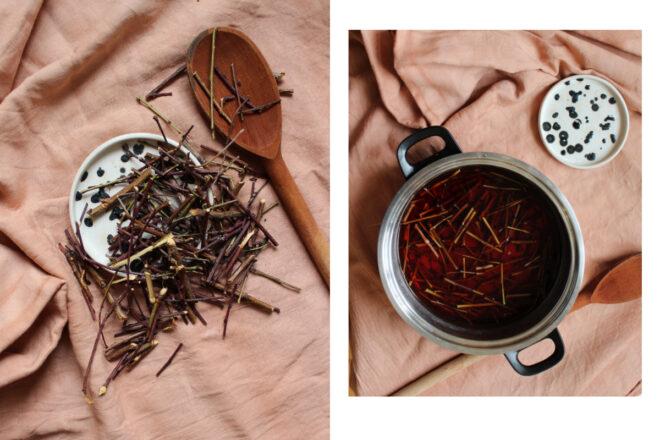
Dyeing with fruit pruning: apple, cherry and plum tree
Did you know that you can dye with fruit cuttings? Using twigs or branches from the many fruit trees that are pruned every year - usually in winter, when there are hardly any other dye plants outside. Some trees are even pruned again after the harvest. So lots of potential for the dye pot!
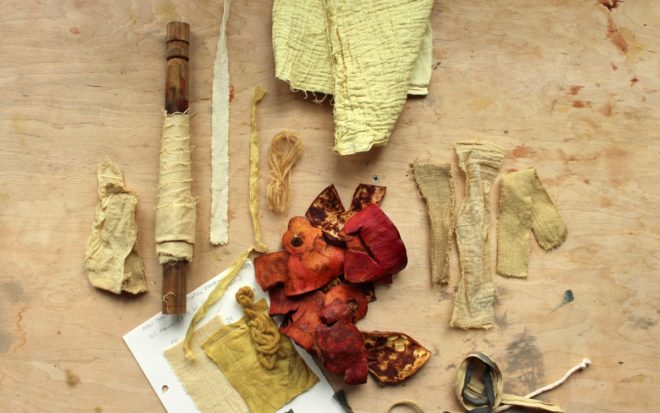
Kitchen dyes: Dyeing with pomegranate
Pomegranate as a dye? There are quite a few fugitive plants found in our kitchens. That are so inviting especially for first dye experiments, like red cabbage or beet root – yet not colourfast. But pomegranate peels are a trustworthy and traditional source of dye.
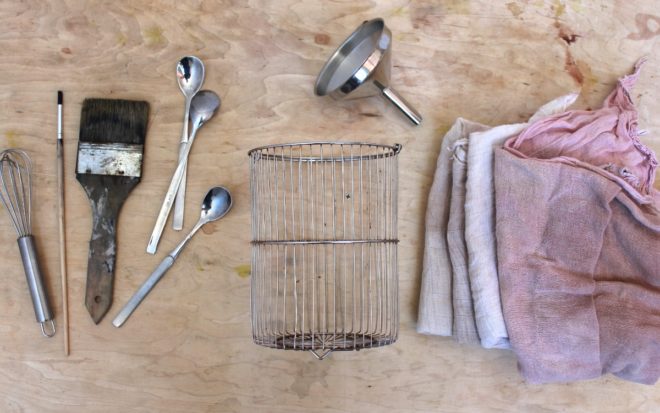
Tools & equipment to get started with natural dyeing
We have already discussed this quite a few times in the workshops: What equipment do you really need as a beginner in natural dyeing?

Dyeing easter eggs with plants
Dyeing Easter eggs with plants can be a simple and exciting project with kids - or you something you do just by yourself (perhaps for your inner child) as I did.

Books about dyeing with plants: A few favourites
Färbe-Bücher für alle: Kreative, Botaniker*innen und Geschichts-Interessierte In meinen Workshops, gibt es nicht nur Färbetöpfe und Lernen durch Selbermachen. Ich hab auch immer viele Färbeproben zum Ansehen dabei, und Bücher über’s Färben mit Pflanzen zur Inspiration.Die Färbeworkshops sind ja noch mehr als gemeinsames Lernen und Entdecken. Ein Raum für Gemeinschaft und Austausch; das Ausprobieren ohne…
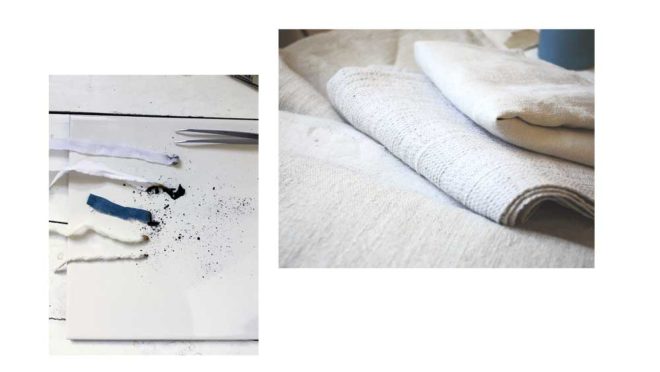
Plant dyeing 101: Choosing fibres to dye with plants
For dyeing with plants it's very helpful to not only know about dye plants, but also about the textiles you want to dye. Textiles, wovens or knitwear, surround us everyday. At the same time, we often don't know much about how they were made and their characteristics. While textiles are omnipresent, they're not a subject that's deemed important very often. Had I not happened to study fashion design, would I ever have learnt about the different fibres that clothe, warm, protect me? So if you feel like textiles are a bit of a mystery, then here is a brief overview for you!
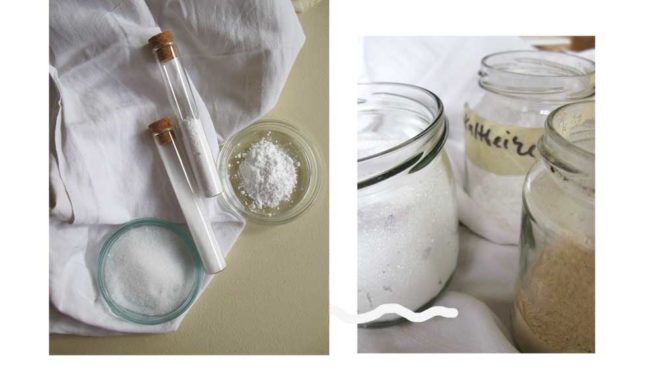
Plant dyeing 101: What is mordanting?
"What exactly is mordanting?" Have you ever asked yourself this, perhaps while leafing through a natural dye book? If you only have a vague idea about mordanting, then you probably already know that it's "kind of important". Read more if mordants are a mystery or have even put you off dyeing with plants.
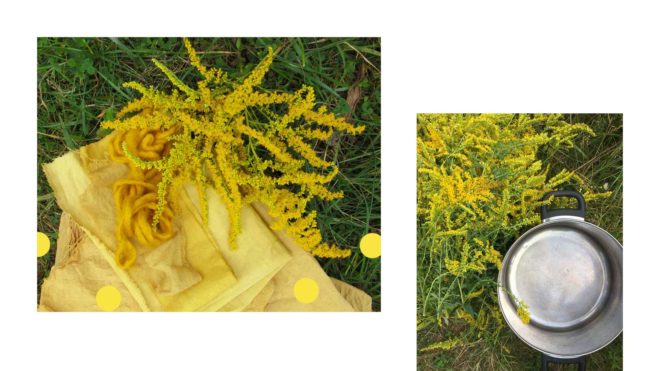
Dyeing yellow with goldenrod
From late summer onwards it can hardly be overlooked and is in full bloom: The time has come to dye beautiful yellows with goldenrod. Comparing my garden today on September 1st, 2020, with photos from previous years, it probably started to blossom earlier this year than in previous years. But it's still not too late to get your dye pots ready!